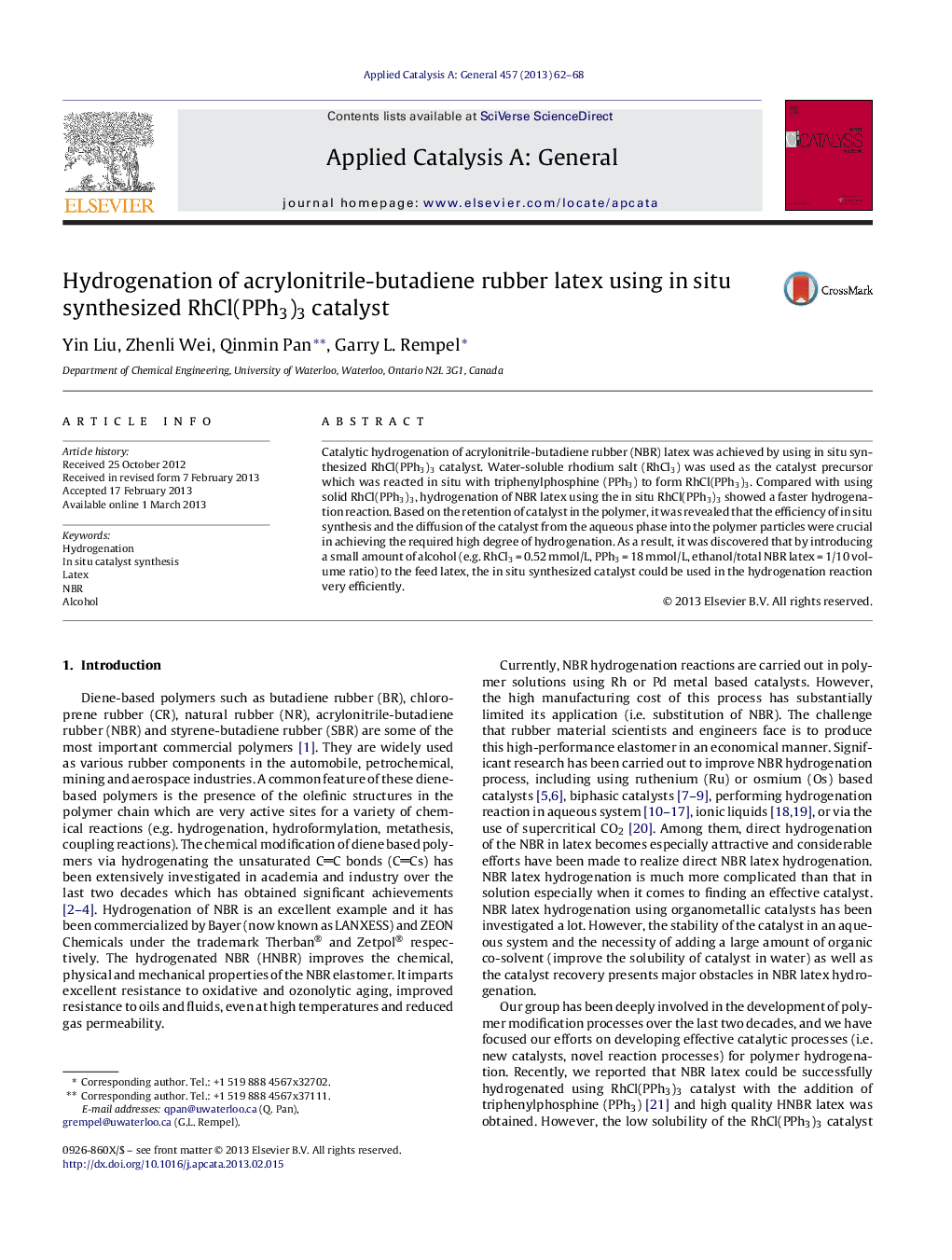| کد مقاله | کد نشریه | سال انتشار | مقاله انگلیسی | نسخه تمام متن |
|---|---|---|---|---|
| 40430 | 45853 | 2013 | 7 صفحه PDF | دانلود رایگان |

Catalytic hydrogenation of acrylonitrile-butadiene rubber (NBR) latex was achieved by using in situ synthesized RhCl(PPh3)3 catalyst. Water-soluble rhodium salt (RhCl3) was used as the catalyst precursor which was reacted in situ with triphenylphosphine (PPh3) to form RhCl(PPh3)3. Compared with using solid RhCl(PPh3)3, hydrogenation of NBR latex using the in situ RhCl(PPh3)3 showed a faster hydrogenation reaction. Based on the retention of catalyst in the polymer, it was revealed that the efficiency of in situ synthesis and the diffusion of the catalyst from the aqueous phase into the polymer particles were crucial in achieving the required high degree of hydrogenation. As a result, it was discovered that by introducing a small amount of alcohol (e.g. RhCl3 = 0.52 mmol/L, PPh3 = 18 mmol/L, ethanol/total NBR latex = 1/10 volume ratio) to the feed latex, the in situ synthesized catalyst could be used in the hydrogenation reaction very efficiently.
Figure optionsDownload high-quality image (155 K)Download as PowerPoint slideHighlights
► In situ synthesized RhCl(PPh3)3 catalyst from RhCl3 and PPh3 in aqueous system.
► CCs in NBR was selectively hydrogenated.
► High conversion could be achieved (≥95 mol.%).
► The diffusion of the catalyst was crucial for high conversion.
► Adding alcohol could improve the in situ synthesis efficiency.
Journal: Applied Catalysis A: General - Volume 457, 24 April 2013, Pages 62–68